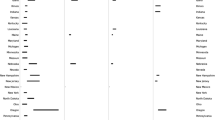Abstract
In recent years there has been a startling rise in the issuance of fish consumption advisories. Unfortunately, compliance by the public is often low. Low compliance can be due to a number of factors, including confusion over the meaning of advisories, conflicting advisories issued by different agencies, controversies involving health benefits versus the risks from consuming fish, and an unwillingness to act on the advisories because of personal beliefs. In some places, such as along the Savannah River, one state (South Carolina) had issued a consumption advisory while the other (Georgia) had not, although at present, both states now issue consumption advisories for the Savannah River. Herein we report on the development of a fish fact sheet to address the confusing and conflicting information available to the public about consuming fish from the Savannah River. The process involved interviewing fishers to ascertain fishing and consumption patterns, evaluating contaminant levels and exposure pathways, discussing common grounds for the provision of information, and consensus-building among different regulatory agencies (US Environmental Protection Agency, South Carolina Department of Health and Environmental Control, Georgia Department of Natural Resources) and the Department of Energy. Consensus, a key ingredient in solving many different types of “commons” problems, was aided by an outside organization, the Consortium for Risk Evaluation with Stakeholder Participation (CRESP). The initial role for CRESP was to offer scientific data as a basis for groups with different assumptions about risks to reach agreement on a regulatory response action. The process was an example of how credible science can be used to implement management and policies and provide a basis for consensus-building on difficult risk communication issues. The paper provides several lessons for improving the risk process from stakeholder conflicts, through risk assessment, to risk management. It also suggests that consensus-building and risk communication are continuing processes that involve assimilation of new information on contaminants and food-chain processes, state and federal law, public policy, and public response.
Similar content being viewed by others
Author information
Authors and Affiliations
Rights and permissions
About this article
Cite this article
BURGER, J., GOCHFELD, M., POWERS, C. et al. Science, Policy, Stakeholders, and Fish Consumption Advisories: Developing a Fish Fact Sheet for the Savannah River. Environmental Management 27, 501–514 (2001). https://doi.org/10.1007/s0026702358
Issue Date:
DOI: https://doi.org/10.1007/s0026702358




